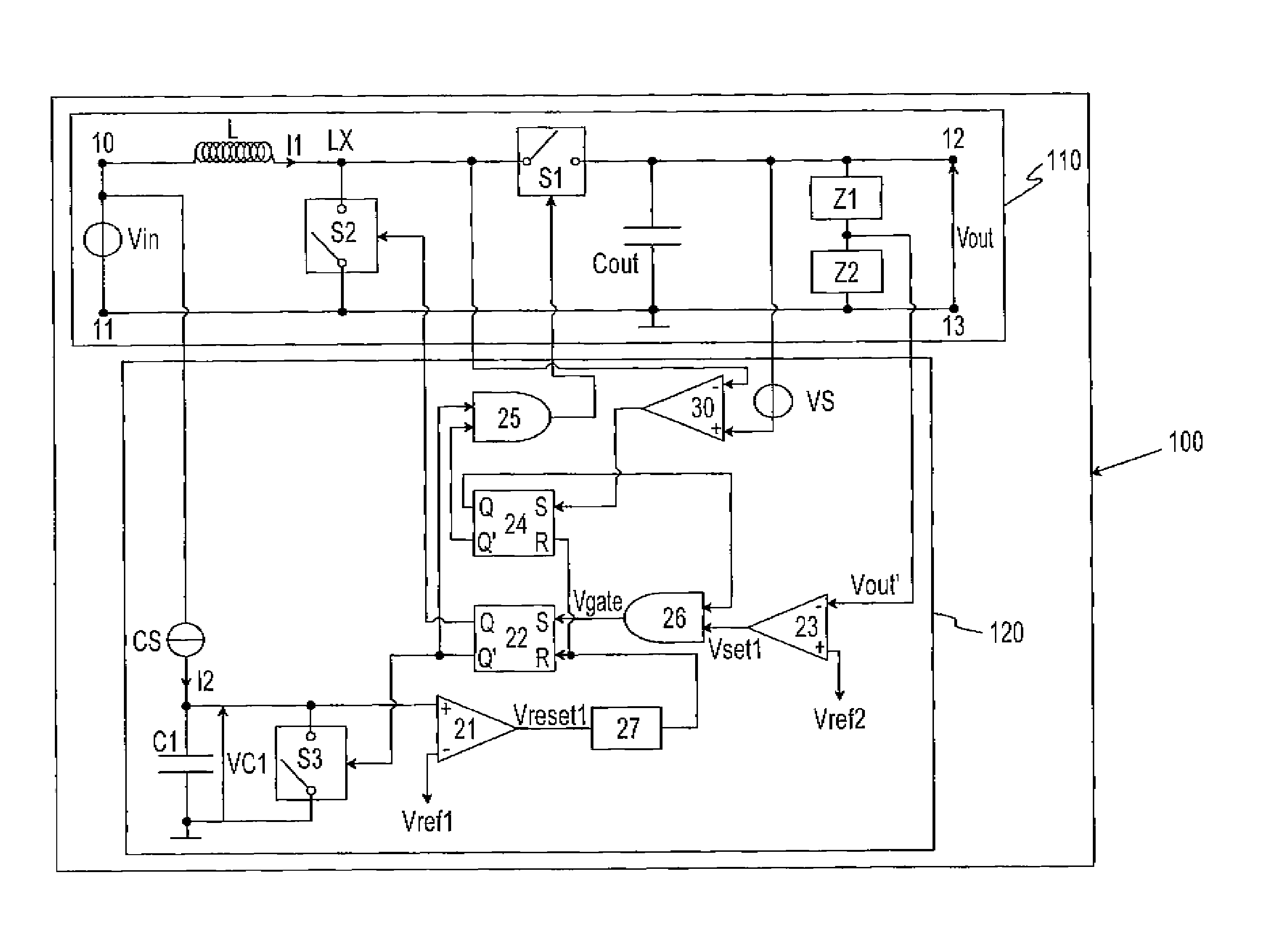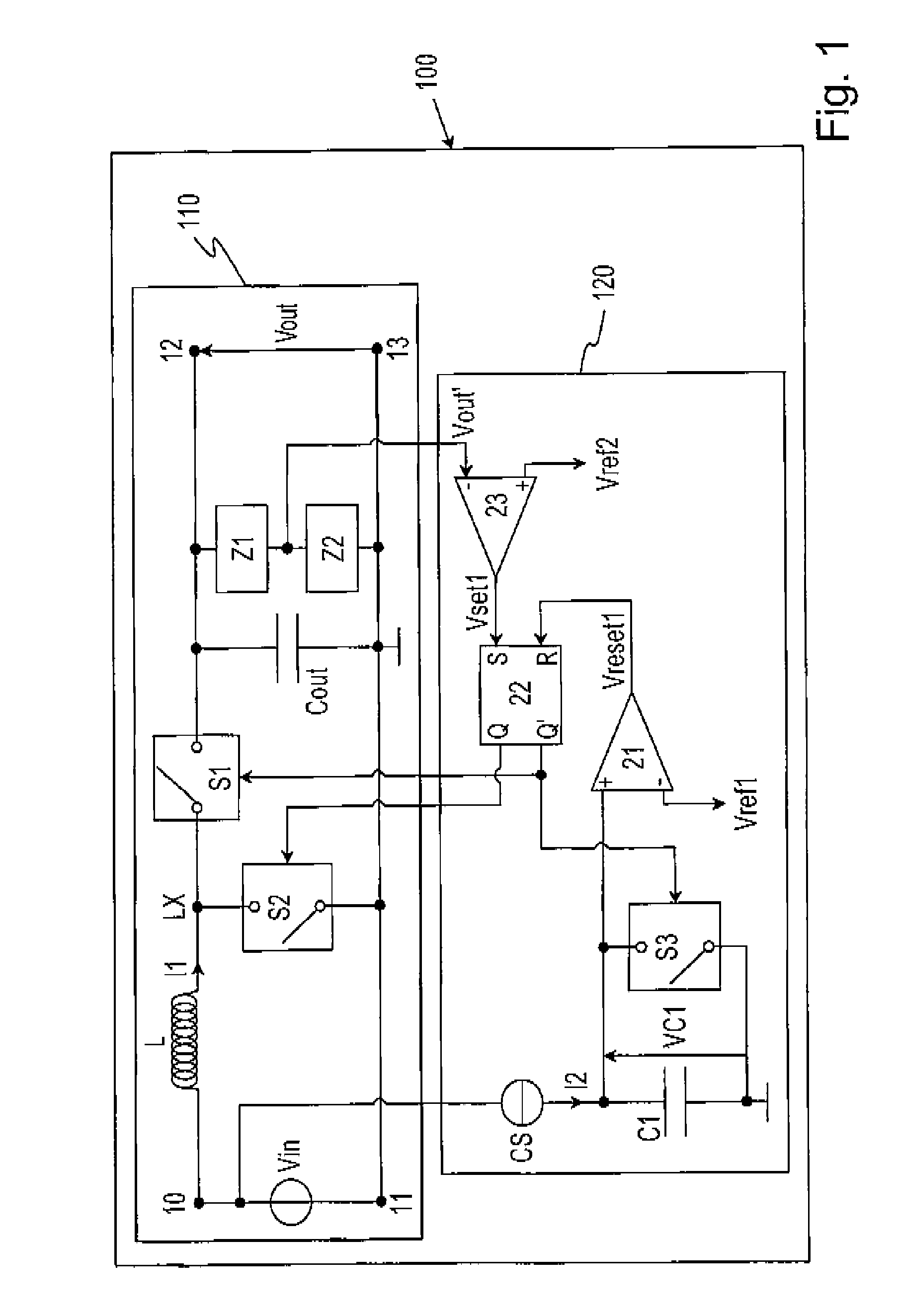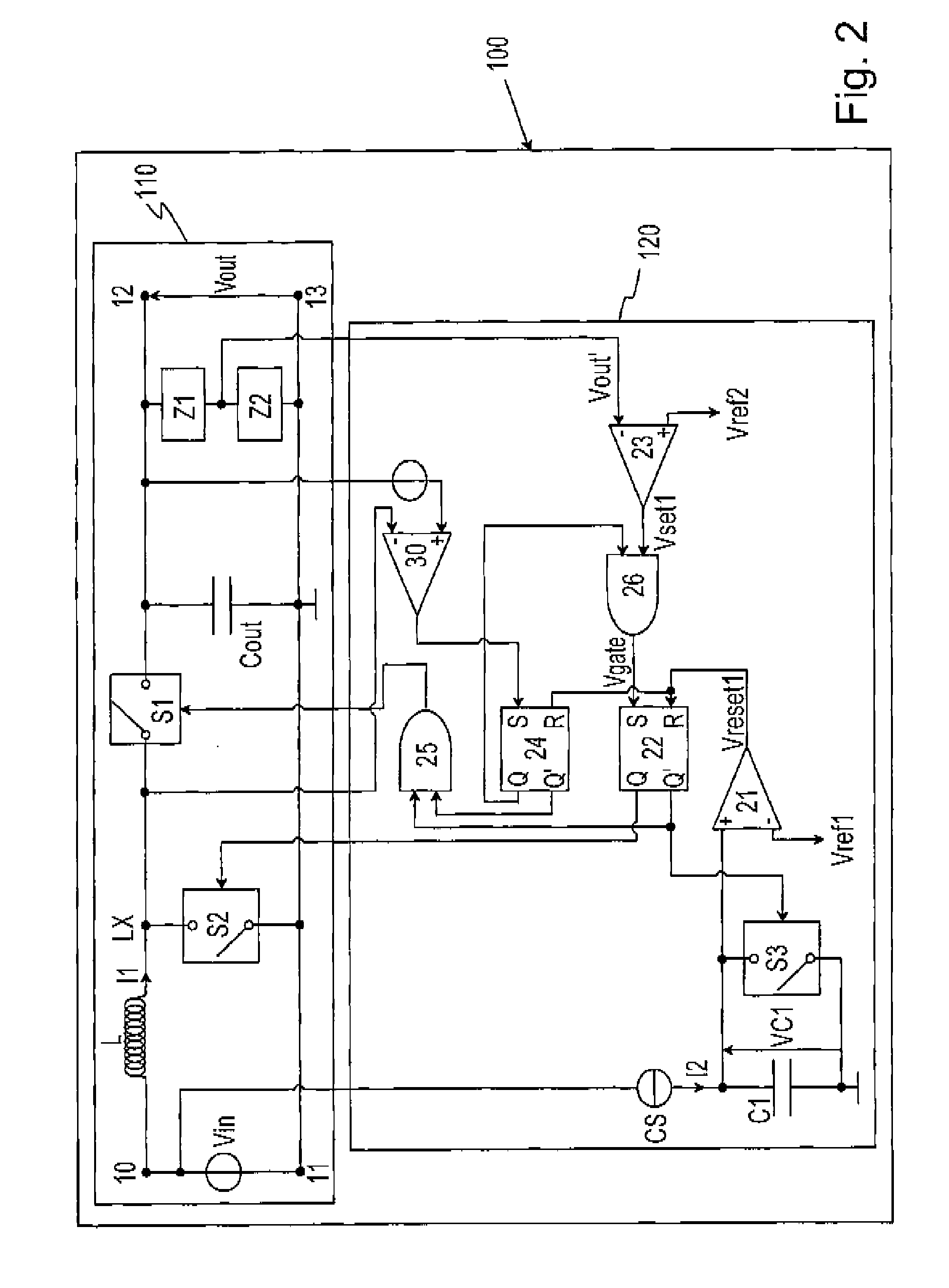Lower power controller for DC to DC converters
a low-power controller and converter technology, applied in the direction of efficient power electronics conversion, electric variable regulation, instruments, etc., can solve the problems of requiring a more complex circuit structure and disadvantageously be very high, and achieve the effect of reducing the number of external components, avoiding noise at high frequencies, and saving power consumption
- Summary
- Abstract
- Description
- Claims
- Application Information
AI Technical Summary
Benefits of technology
Problems solved by technology
Method used
Image
Examples
first embodiment
[0035]FIG. 1 is a schematic diagram of a DC to DC converter system 100 without zero current detection according to the present invention. The DC to DC converter system 100 comprises a synchronous up DC to DC converter 110 for converting an input voltage Vin (e.g. battery voltage) across the input terminals 10, 11 into a higher regulated output voltage Vout across the output terminals 12, 13, and a control circuit 120 for regulating the output voltage Vout through a switch mode.
[0036]Such DC to DC converter 110 also comprises switching devices S1, S2 driven by the control circuit 120 with an opposite switching sequence, which may be transistors (e.g. MOSFET, BJT) or any other controllable semiconductor switching devices, and an external inductor L for storing energy in the magnetic field generated by the current I1 that flows through it and avoiding to short-circuit the input voltage Vin when the switching device S2 is turned on.
[0037]The control circuit 120 contains a capacitor C1 a...
second embodiment
[0042]FIG. 2 depicts a schematic diagram of a DC to DC converter system 100 with zero current detection according to the present invention when in PFM mode. The DC to DC converter system 100 of FIG. 2 comprises the synchronous up DC to DC converter 110 of FIG. 1 and the control circuit 120 of FIG. 1 with the addition of a second set-reset flip flop 24, two AND gates 25, 26, and a third comparator 30 for detecting a zero current through the inductor L.
[0043]In this second embodiment, the DC to DC converter system 100 is now supposed to operate in PFM mode, such that the current I1 passing through the inductor L is supposed to have sufficient time in order to reach a zero value.
[0044]Like the first embodiment of FIG. 1, the set-reset flip flop 22 is reset after the voltage VC1 across the capacitor C1 increasingly reaches the reference voltage Vref1. Nevertheless, this second embodiment differs from the first one in that the comparison signal Vreset1 is not only sent towards the reset ...
PUM
 Login to View More
Login to View More Abstract
Description
Claims
Application Information
 Login to View More
Login to View More - R&D
- Intellectual Property
- Life Sciences
- Materials
- Tech Scout
- Unparalleled Data Quality
- Higher Quality Content
- 60% Fewer Hallucinations
Browse by: Latest US Patents, China's latest patents, Technical Efficacy Thesaurus, Application Domain, Technology Topic, Popular Technical Reports.
© 2025 PatSnap. All rights reserved.Legal|Privacy policy|Modern Slavery Act Transparency Statement|Sitemap|About US| Contact US: help@patsnap.com



